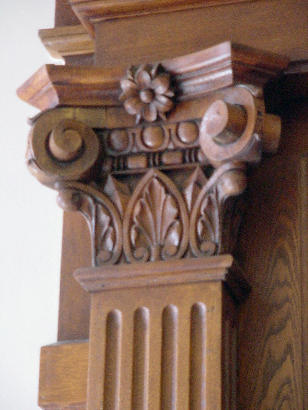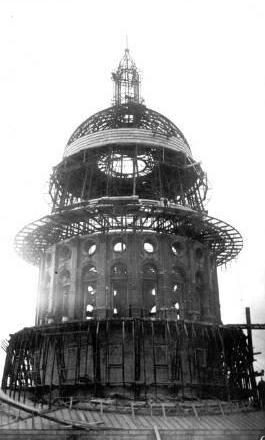|
Over
one hundred and thirty years ago Texans celebrated the completion
of the Texas
Capitol in Austin.
But, as in past observances, there will be little acknowledgment of
the role that East Texas,
especially the town of Rusk,
played in the capitolís
completion. |
East Texans who
visit the capitol
may guess that some of its woodwork came from East
Texas forests, but they rarely realize that the iron staircases
and mammoth columns were produced by Texas convicts housed in the
old State Penitentiary at Rusk
(now a hospital for the mentally ill).
Thanks to a masterís degree thesis written by Sandra Fuller Allen
at Stephen F. Austin State University in 1974, we have an enlightening
account of the role Rusk
played in the Capitolís
construction in the late l880s. |
 |
|
A
contract executed between the Texas Capitol Commission and contractor
Gus Wilke called for Ruskís
prison to produce some two million pounds of structural cast iron
items for the capitol,
including castings for the principal columns, pedestals and caps,
the dome and other ornamental work.
The state earlier built a 25-ton blast furnace, known as Old Alcade,
at Rusk with R.A.
Barrett as its superintendent. The furnace originally made items
such as kettles, sash weights, and farm implements, but was used
for capitol iron when Barrett became a consultant for the capitol
project.
Transporting the heavy iron items from Rusk
to Austin posed a problem.
Since horse-drawn wagons could carry less than a ton over unpaved
roads, which were impassable in poor weather, the answer lay with
the railroads.
At the time, Ruskís
rail connections to Austin
were interrupted by an unserved stretch between Alto
and Lufkin. Convicts
were soon assigned to build 22 miles of narrow gauge railroad to
connect the Kansas and Gulf Short Line with the Houston, East and
West Texas Railroad at Lufkin.
But that didnít totally resolve the transportation issue. The convictsí
line was narrow gauge while other lines used standard gauge rails.
The difference forced haulers to unload the iron castings from one
track and load them on another--a maneuver repeated several times
before the iron arrived in Austin.
Some of the Rusk
castings were substituted with new parts because of changes is the
capitol plans. The drawings of the capitol dome called for cast-iron
plates, but galvanized iron from Belgium was substituted because
of the weight of the Rusk
castings.
|
 |
When the columns
for the capitol colonnade were delivered to Austin,
they were rejected by two Building Commission members because of their
weight. However, since granite (which had been chosen over limestone
for the capitolís exterior) would have doubled the weight, the rejection
of the Rusk iron was
revoked and the columns were installed.
Today, thousands of people visit the Texas
Capitol every day. While some may recognize that cast-iron was
used in its construction, few know the iron was built by prison hands
in an East Texas community.
© Bob
Bowman
Bob Bowman's East Texas February
7, 2011 Column, updated January 23, 2012
A weekly column syndicated in 109 East Texas newspapers
See Texas
State Capitol |
|
|
